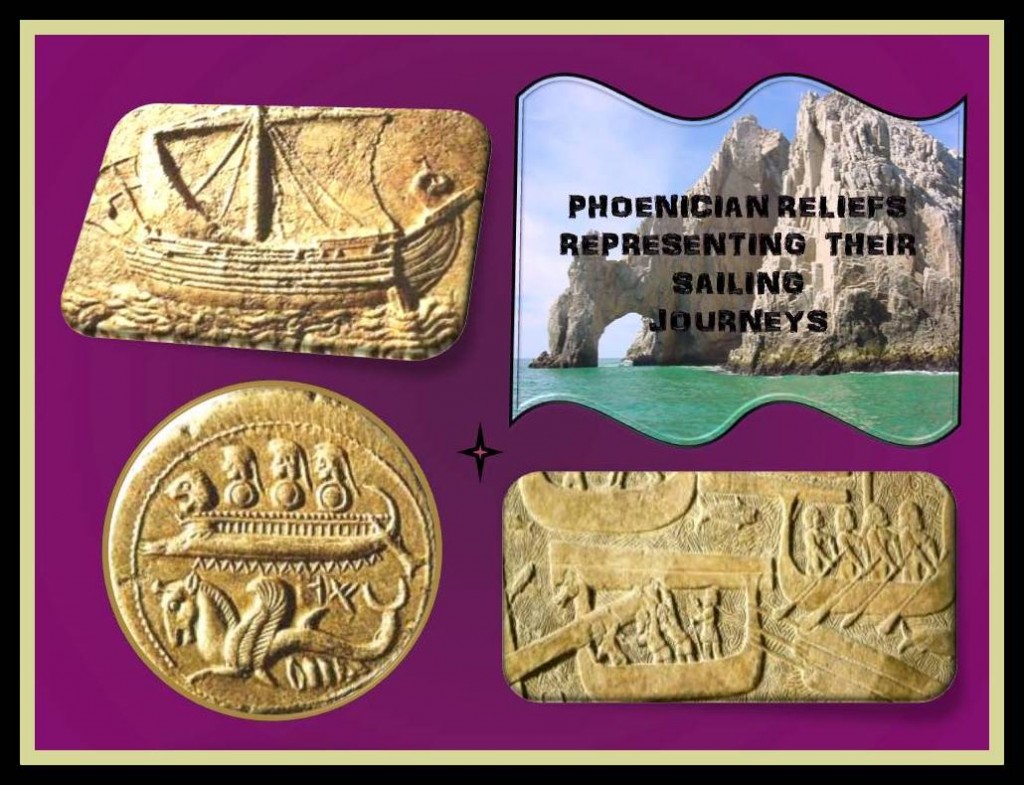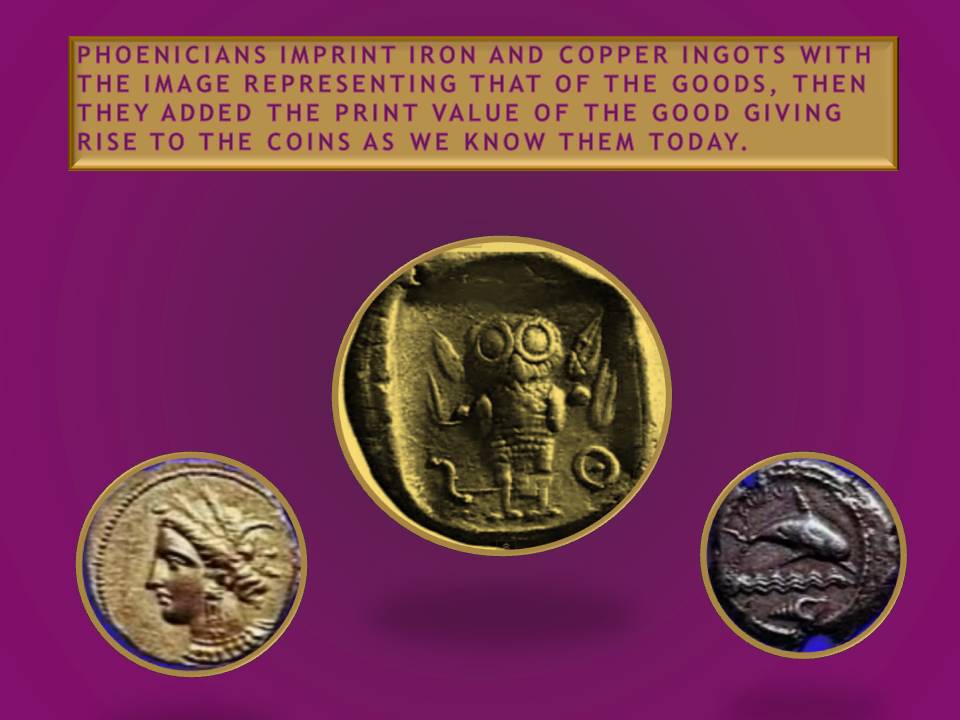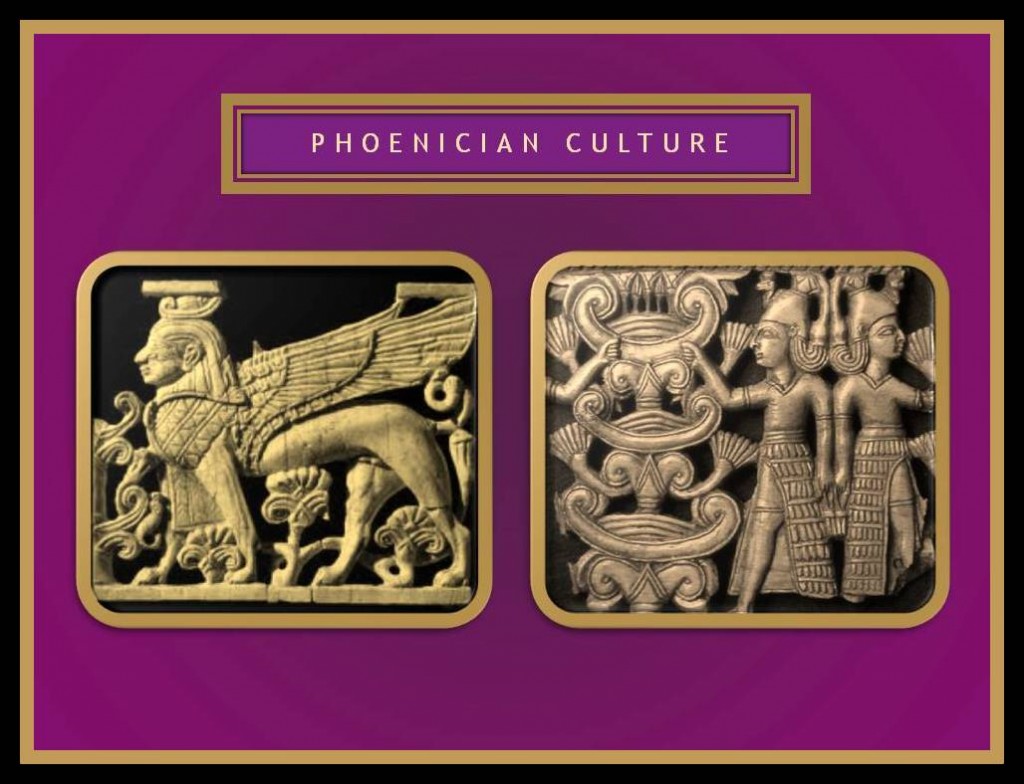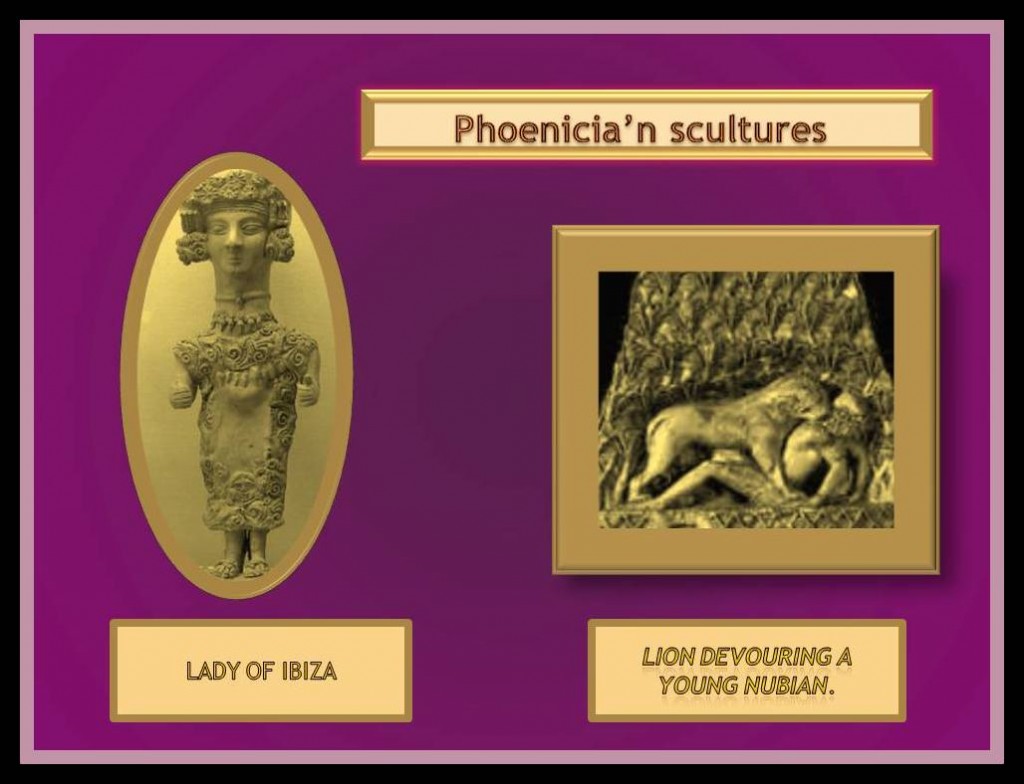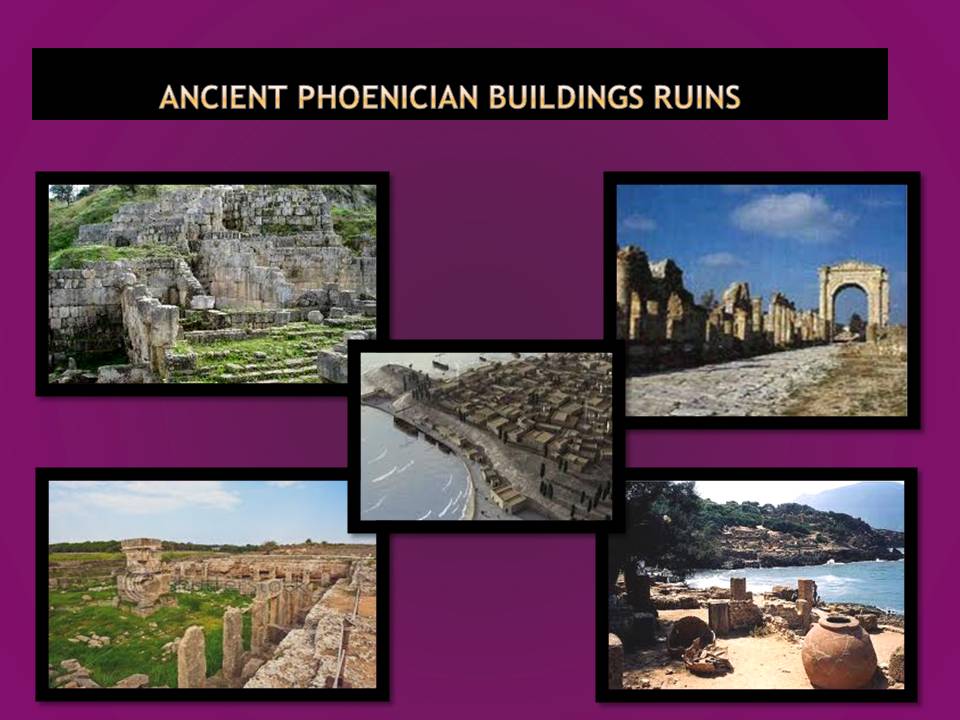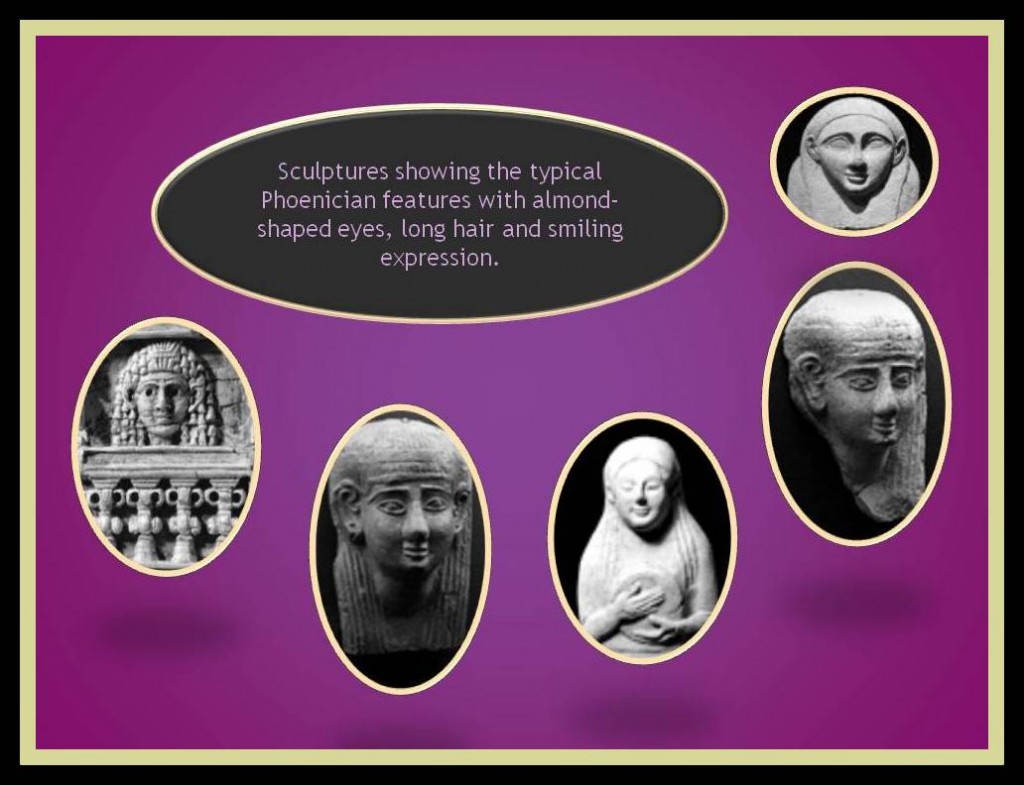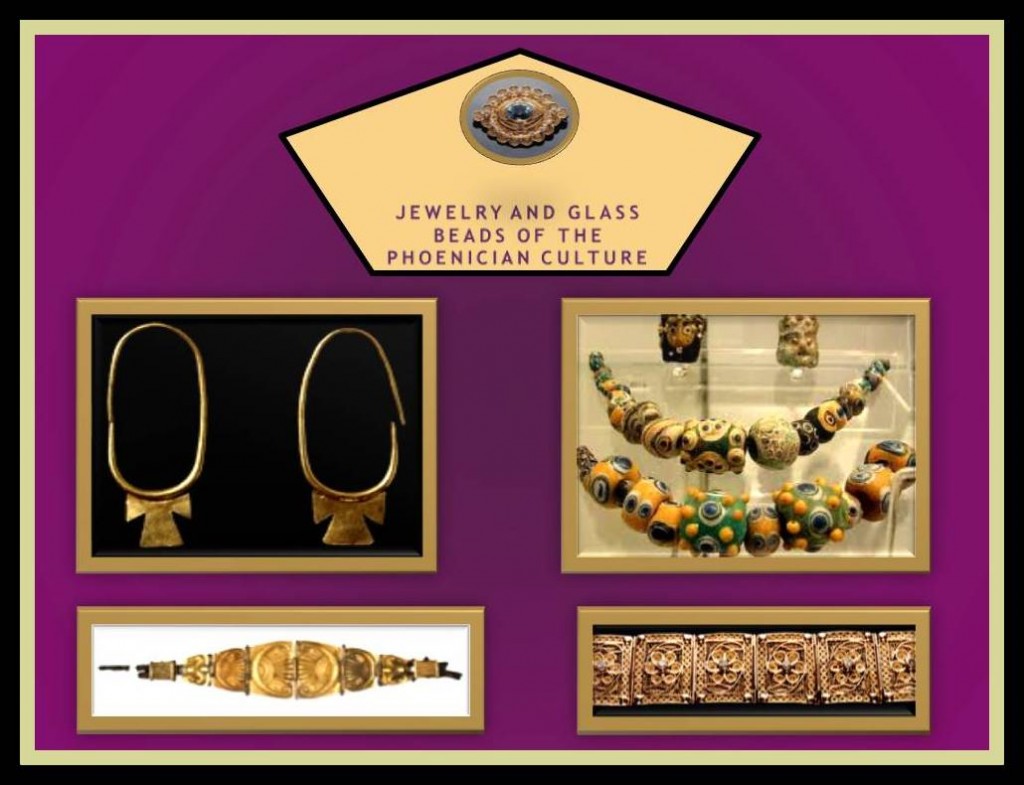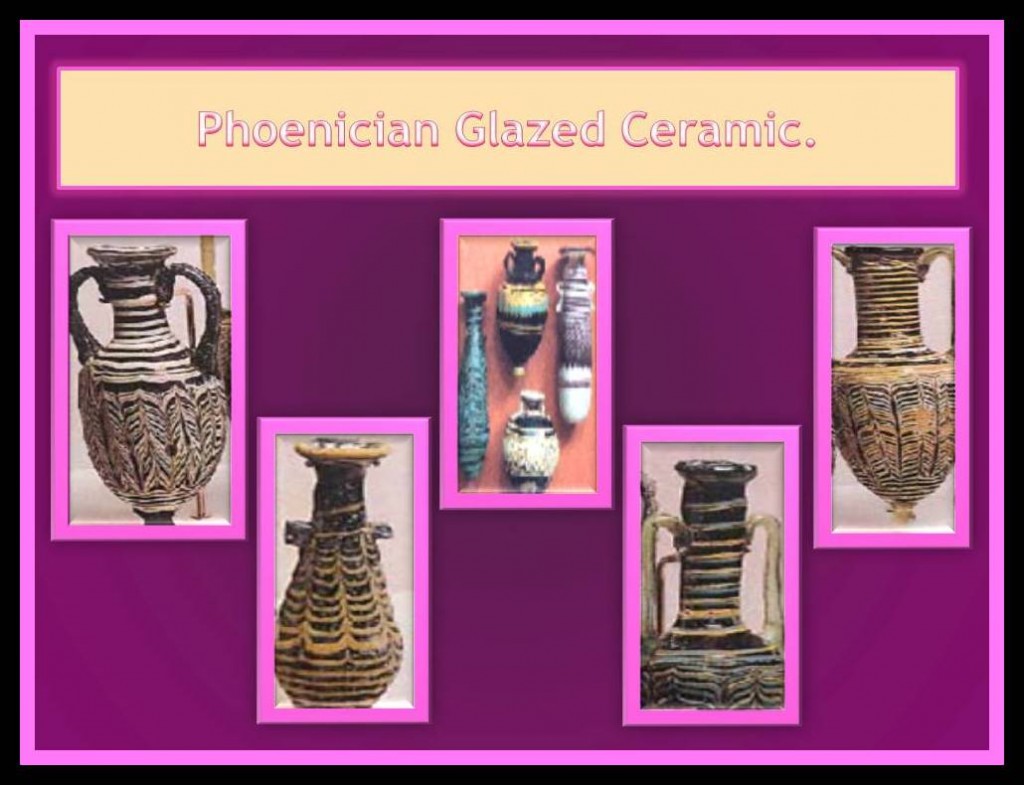 The Phoenician culture
The Phoenician culture
Phoenicia rather than a country as such was what you could call it a Confederation of cities located in the coastal Mediterranean East in what today is the Lebanon. The phoenicians develop a very interesting art work that was highly related to their main socieconomic activity as merchandisers traveling by sea mostly. Their glass making skills, their ceramic and sculpture production have as principal objective satisfy the demand of this decorative items for many others country to whom they maintain a steady trade relationship.
Other artistic manifestations like painting to decorate architecture feature were more in respond to their needs of expressing their culture, traditions and believe while serve as well for the decorative purpose. The phoenician painting is study in a diferent article with more detail because their characteristic are very particular and differs from their contemporaries nearby countries.

The Phoenicians were sea merchants who developed trade widely as a means of fundamental life. Vessels used were constructed with mastery by themselves in huge shipyards that credited his powerful development in maritime activity.
They did not have appropriate or fruitful land to work with so it was big challengers for them grow an advanced agriculture as the inhabitants of the interior lands had developed, although they tried as hard as they could. In the summer the weather was so hot and dry that it hurt crops greatly. The settlement area in which they lived permanently was not ideal are all to survive on agriculture. They must them turn to trade and exchange of products as the best solution available due to its proximity to the Ocean.
The Phoenicians as it was the case with other inhabitants of the Mediterranean region did not know money, for what his trade was based on the barter of goods with more or less the same value or that met at least both trading sides satisfaction.
They approach to the coasts, landed by placing their boats not far from them, placed at the beach goods who wanted to Exchange and retreating again to their boats. Villagers placed objects that they understood could meet a value equated to the merchandise to the Phoenicians.
The Phoenicians them returning to the beach; if they were satisfied with the goods left by the settlers they took them, but left it in place and waiting for a new offering is not and so until the barter satisfied both parties.
With time the exchange of goods as a means of barter was made more difficult by the factor of the transportation and began to equate the value of objects and animals by various metals not only gold but also iron, copper ingots, and others representing a matched value to the goods. Giving account of the possibility and advantages of this form of pay for these goods gradually began to chop pieces of these ingots into smaller fragments and imprint them with the image representing that of the goods, then they added the print value of the good giving rise to the coins that were evolving and refining as well as expanding the diversity of images represented. The coins were much easier to transport and could not be altered in its value but they could split in smaller parts if necessary.
This was how their Phoenician cities through trade and the Exchange could emerge and even develop as urban centers around 1500 BC with the exception of Byblos which already had prospered as an urban center from around the third millennium BC.
In relation to these cities are mentioned some names in documents found in Egypt, Assyria and elsewhere that in one way or another related to the Phoenicians in ancient times. Their political organization corresponded to a system of independent cities States, each with its respective monarchs and systems of government administration, although they were always intensely communicated.
These cities include:
· Acre.
· Tyre.
· Sidon.
· Ashdod.
· Ugarit.
· Byblos.
Sidon, tyro and Byblos were the original cities and the most important, but cities developed in the colonies had the same distribution and constructive pattern. They were near the places of maritime transportation and had their necropolis near the city, on the outside of the walls that protected the city.
Apparently the word Phoenix (purple in Greek) has its origin in the allusion that the Greeks did in their documents about the production that the Phoenician people obtained of a purple tint very appreciated in the production of textiles.
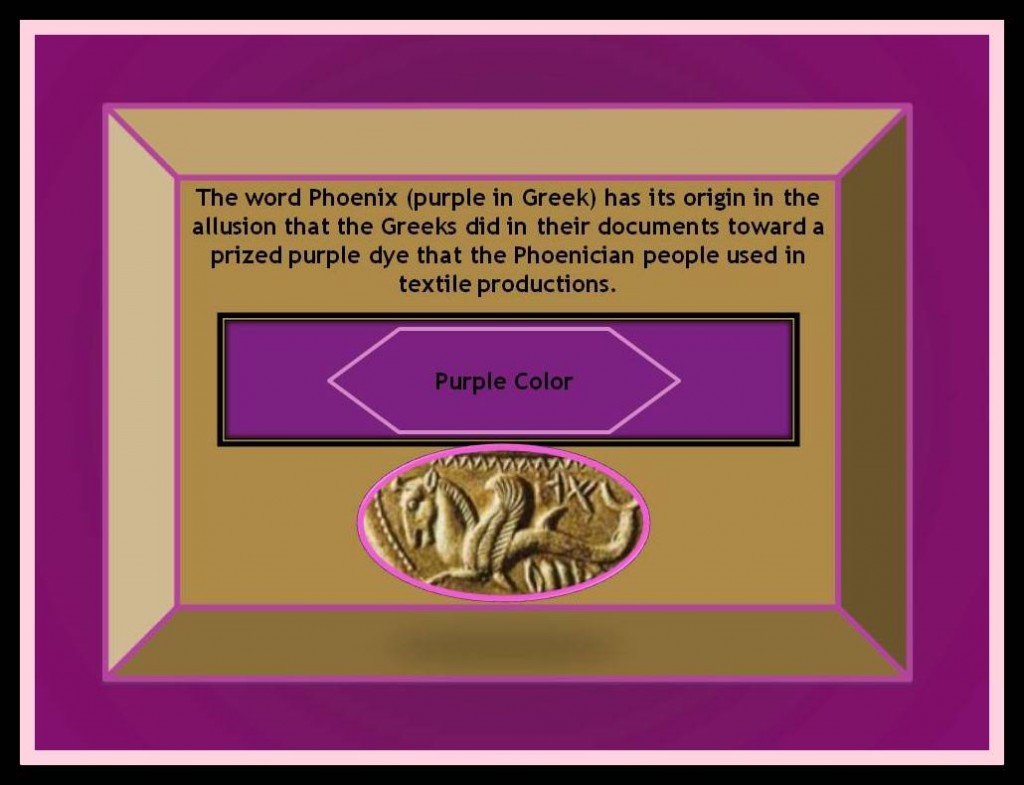 It may be the origin of the word Phoenicia to describe the region where live the people who produced the purple tint used for dye the textiles.
It may be the origin of the word Phoenicia to describe the region where live the people who produced the purple tint used for dye the textiles.
They obtain the shells of Murex and the Cedar used to produce the base of this tint at the Lebanon region through trade and Exchange.
The Phoenicians were excellent in the elaboration of many objects using as base materials such as wood, ivory, and metal, they also develop objects made of glass and of course textiles.
Between 1500 and 1200 BC the Phoenician cities reached its period of prosperity, achieving control of commercial activities in that region. The Phoenicians lived for quite some time as independent peoples and this fact contributed to greater continuity and reinforcement of cultural traditions.
They were dominated by the Egyptians during a period of time during which the Egyptian art influence became evident in many of their works of art at that time; although this influence was adapted over time to respond more at the character and tradition of the Phoenician culture as well as the new tendencies of the period that were more appreciate by the clients.
Between the 6 and 4 BC Phoenicia was under the influence of the Persian Empire which had spread their power across the region of Mesopotamia to the Mediterranean Sea. In this period Persian art influences also the Phoenician artists being more evident in the architecture.
Approximately between the 1100 and 1175 BC they managed to again be free of any domain or foreign influence until the so-called “Hellenistic period” around 300 BC in which the influence of Greek art in their works can be clearly seen since in this period.
The customers asked for pieces and general merchandise that responded better to the characteristic of the popular Hellenistic art.
In general it can be said that the Phoenician It is an art that is markedly Artisan; but also reached a level of refinement enough for those objects created become a merchandise that could be traded, sale or exchange for others; being an important means for them offer quality products to satisfy the demand.
In the Old Testament are quoted some passages which demonstrate the skills of these products made by the Phoenicians who were true works of art. Such is the case of the Hiram from Tiro artist who was commissioned to build and decorate the Temple of Solomon in Jerusalem.
However although the influence of Egypt in Phoenician art can be considered prominent cannot be excluded that other peoples in contact with them through trade as Syria, the Cypriot, the Assyrians and the Aegean peoples influenced as well, after all; these peoples also were clientele and their tastes, religion and traditions were taken into account by the Phoenicians in creating these works.
The Phoenician is an art with eclectics features can be found even in the same piece of work influences from different cultures. As these works were intended for the sales marketing aspects such as customer tastes and trends of the period should be observed. On these bases had to be an original art, unpredictable and adaptable, but with quality.
Therefore reaffirming what had previously stated can be said that in the Phoenician art are therefore two fundamental periods; the one that corresponds to a first period with the Egyptian and Assyrian influence and a second period in which a preference is denoted by Greek in the Hellenistic period.
It was not in fact an art that was characterized by an abundance of works or that were designed to serve as a means of propaganda, religious, political or social.
The most important Phoenician contribution in the history of art is the creation of a system of alphabetic writing which is the root of the Western alphabet when the Greeks adopted it and then spread to the rest of the world.
Another of their important achievements was the implementation of a very effective navigation system that made possible their incursion through vast maritime areas. It is said they jealously kept their secrets concerning their knowledge of navigation and trade routes since they guaranteed them a prominent and supremacy position in the region. They also preferred sinking their own boats that leave these secrets were known.
ARCHITECTURE
The Phoenician culture do not developed a monumental architectures as the Egyptians does, although the walls and ports were built with an advanced technique of stones well squared, alternating with masonry. We must remember that their settlements in the coastal part were exposed to adverse weather conditions and had to adapt to the terrain.
The Phoenicians built the temples in a high place. They made their homes and buildings in cubicles rather agglomerates. There was no wide or squares streets as the Greeks had and wasn’t similar to other cities in Mesopotamia either.
THE SCULPTURE
In what refers to the sculpture is noticeable aesthetic harmony alternating the two main influences the Greek and Egyptian already mentioned. There weren’t colossal sculptures with large dimension, abounding instead small figurines of varied typology such as a Sphinxes, female figurines, royal portraits and busts of gods. Parts of them have been found in very good condition as the well-known Goddess Tanit from the necropolis of the Puig d’es Molins that is exposed in the Museum of Ibiza.
The main fields of interest of the Phoenician sculpture are the interesting reliefs of sarcophagi and funerary stele, many of them decorated with figurative motives of high quality and also combining the influences of Greek and Egyptian art.
Peculiar sculptures showing the typical Phoenician features with almond-shaped eyes, long hair and smiling expression (although in very few quantities) have been preserves given us an idea of their racial and facial appearance.
With unique features and style are figurines made in ivory and bone; a tradition that came from the Bronze Age.
Original from the Palace of Nimrud, has been preserved:
– Woman in the window.
– The Birth of Horus on the Lotus Flower.
– The relief of Lion devouring a young Nubian.
– Mona Lisa, in the Iraq Museum.
Metal work
They develop great abundance in the Metallurgy and jewelry production; been a very profitable manufacture activity for them, created works of great finish that possess the same mix of styles that we had spoken earlier.
Numerous figurines of bronze, some of which are covered with layers of gold, usually represent male characters with the popular Phoenician hooded “lebbede”. Pots and metal cups, and an infinite variety of jewelry, branch in which the Phoenicians showed a high level of expertise and beauty are equally abundant.
 Likewise, we can speak of the achievements reached in the production of weapons, toiletries, and furniture. The bronze used had around nine parts of copper and one part of Tin. This metals artistic works were made at the hands of skilled goldsmiths with alloys of high hardness that astonished by its quality considering the era in which they were made.
Likewise, we can speak of the achievements reached in the production of weapons, toiletries, and furniture. The bronze used had around nine parts of copper and one part of Tin. This metals artistic works were made at the hands of skilled goldsmiths with alloys of high hardness that astonished by its quality considering the era in which they were made.
Objects destined for war stand out above all, the shields were in a way slightly convex, round and instead of the regular projection had a long cone that stood out in the middle. Both shields and helmets were decorated with reliefs in which they elaborated some designs with vegetable and animals motifs as well as sequences of simple geometric patterns such as circles.
In addition to the bronze and copper also used other more resistant materials such as iron and lead to the construction of these weapons; material that is presumed probably imported from the region of Spain mostly since their own country has not abundant deposits.
GLASSWARE PRODUCTION AND MARKETING
Another important contribution by the Phoenicians to the history of art is the discovery of the production of glassware that is conferred to them.
There is a story; telling about how few Phoenician merchants realized when they made a bonfire on the beach that some particles of sand mixed with pieces of nitro they ported and used instead of stone wore melted by the heat of the fire and had formed a clear mixture that after cooling it hardened. They used nitro in the absence of appropriate stones in the beach to accommodate their utensils on them in a fire and prepare dinner so it was that accidental and fortuned incident that gave rise to one of the major industries of production of objects made of glass.
These objects included domestic use, jewelry, part of furniture, sacred urns and objects for religious worship as well as vases for decoration of palaces and temples. The small glass recipients the Phoenician elaborate to contain perfume were particularly appreciated and popular.
To see more photos of Phoenician glass work I encorage you to visit the photostream of Badran Ghosn a Lebanon photographer who have very good picture about this temathic.
The Phoenicians made three fundamental classes of glass:
- Transparent glass without color.
- Semitransparent glass with color.
- Opaque glass with porcelain-like finish.
Method for the manufacture of glass objects used by the Phoenicians was quite similar to that used today except for the fact that they do not used frequently the empty glass techniques of file the glass mixture into molds, probably because they could not reach easy a temperature to melt the glass and be poured into these moulds, although it is possible that they used certain moulds for small objects as balls of glass for jewelry and beetles made also of glass.
Ceramic
Phoenician ceramics unfortunately do not counts with the amount of physical evidence since due to the low quality of materials in which they were made and the time elapse, no enough of this object were preserved. Only fragments in the majority of cases found that do not provide sufficient information in how the majority of them may have been originally.
It is assume that a not very poor quality clay were used in the early days by the Phoenicians, but it is presumed also that they were not particularly beautiful works of art; just mere vessels not decorated without glaze with the simple practical function of containing liquid substances as oil as well as milk, water, honey and unguents.
Some ceramic vessels later possessed certain decoration with geometric shapes such as lines and a kind of drawing with clear lines on a dark background. Mud with which the majority of pottery decorations were developed at this stage does not seem to have been of very high quality but as well as other objects there is evidence that they were widely marketed towards different areas of the region. Eventually they made an effort to beautify these vessels for best results in marketing so they used the technique of the glaze that was much more appreciated. This is how ceramics began to have higher quality progressively with strong Egyptian influence first and Greek later.
But we could say that in general it was not a notable artistic activity and as decorative art do not transcended. The influence of the Egypt and Greece styles was predominant but the Phoenician did not have the quality of these one repeating systematically the same patron without any new technique or a particular characteristic that really distinguish.

